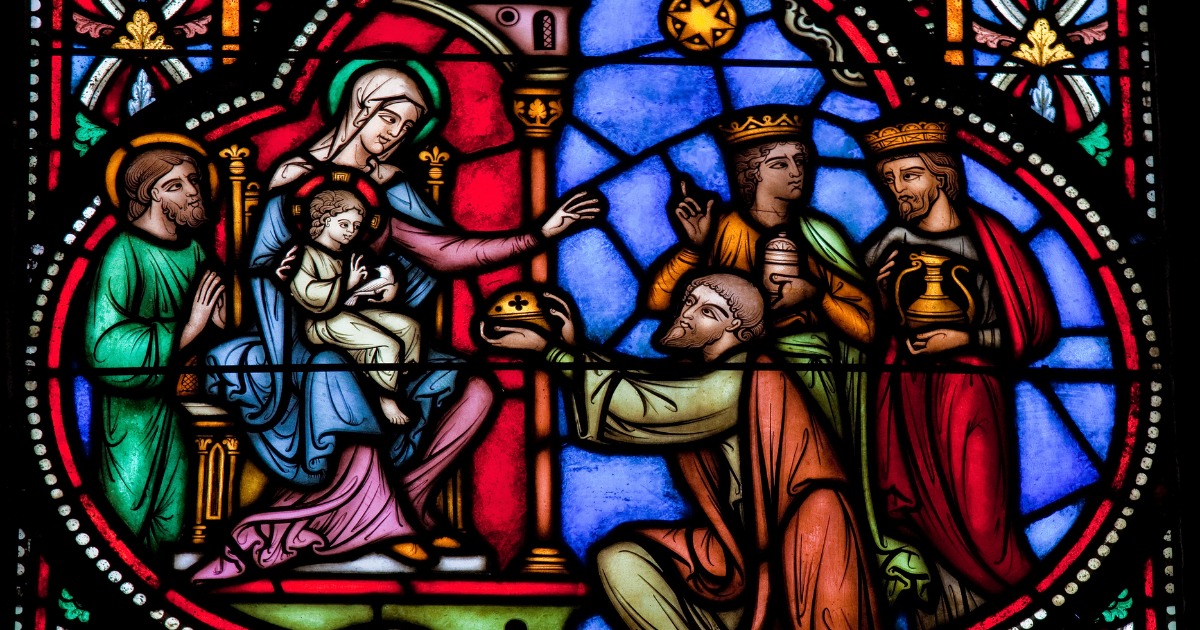

Articles
Twelve Days
In American culture, we think of the Christmas season as the time leading up to Christmas, and Christmas celebrations frequently last only a few days, and then we take down the tree and get ready to celebrate the New Year. Or we think about Christmas as lasting until New Year, after which it is back to our normal schedule. This way of looking at things is a product of the secularization of the Christmas holiday, where Christmas is about shopping for gifts and a break from work. In the historic Christian tradition, however, this approach is wrong on all counts: the period leading up to Christmas is Advent, a time of preparation for the celebration of Christmas and anticipation of Christ’s second coming; the Christmas season and the celebration of the Incarnation begins on December 25 and lasts for twelve days, until Epiphany (January 6), the celebration of the arrival of the Magi in Bethlehem. Even when we talk about the “true meaning of Christmas,” we tend to focus only on Luke’s account of the birth, sometimes bringing in the Magi. When we do this, we miss some important themes of the Christmas story. In Matthew, the Slaughter of the Innocents is closely linked to Jesus’ birth. Whatever we think of the chronology, for Matthew, this event which we so often overlook is integral to Christmas, and thus is commemorated during the Christmas season in liturgical churches. Before we look at this in more detail, however, it will be helpful to consider where the “Twelve Days of Christmas” came from. Why Twelve Days? The twelve days of Christmas came from the church’s celebration of other events in the life of Christ. In parts of the eastern section of the Roman Empire, Jesus’ birth was celebrated on January 6. Luke 3:23 was read as saying that Jesus was baptized on his thirtieth birthday, and so that became the date at which all of Jesus’ early life up to his baptism was celebrated. The holiday was called Theophany, indicating the day God in Christ was revealed to the world. In the western part of the Empire, December 25 was celebrated as the Feast of the Nativity for reasons explained in my previous article, and that became the established date across the churches. However, the celebration of Theophany on January 6 continued. In the west, however, it was called Epiphany and became associated with the arrival of the Magi in Bethlehem. As a result, in some cultures it is also called Three Kings Day. The commemoration of Jesus’ baptism was moved in the west to January 7. The churches in late antiquity and the Middle Ages maintained a rigorous schedule for fasting punctuated by feast days, particularly in monasteries. This is still true in Eastern Orthodox Churches. The time from Christmas to Epiphany had no fasts; it was filled with feast days and thus became known as the Feast of Christmas, or Christmastide. The Feast ended on Twelfth Night, the evening before Epiphany. The Innocents and Other Martyrs Even though the days between Christmas and Epiphany were feast days, they were not always celebrations of happy events. The days immediately following Christmas on the liturgical calendar include the commemoration of several martyrdoms. December 26 is the Feast of Stephen mentioned in the carol “Good King Wenceslaus.” Stephen was one of the Seven selected as deacons in Acts and is often considered the first martyr. The feast days of saints are most often the dates of their deaths, or to put it differently, the dates they entered heaven. Thus, the feast day for Thomas á Becket is December 29, the day he was murdered in his cathedral. For early martyrs like Stephen, these dates are assigned by tradition. December 28 in the western churches is the Feast of the Holy Innocents, the commemoration of the slaughter of the baby boys in Bethlehem by Herod. In the early church, the Innocents were considered the first Christian martyrs and were commemorated on Epiphany. Later, this became its own feast day, with different traditions assigning different dates to it, including December 27, 28, and 29 and January 10 (in churches in which Christmas is celebrated on January 6). Although the Slaughter of the Innocents should logically follow Epiphany, it is closely connected to Christmas in Matthew’s Gospel: even though the incident seems to occur two years later (on the assumption that the star appeared when Jesus was born and that Herod didn’t add extra time just to be sure), as noted above Matthew spends far more time on the events surrounding the Magi than he does on the birth of Jesus itself. Unlike the Western church, the Eastern Orthodox Churches continue to celebrate the arrival of the Magi on Christmas, and even in the West the Magi are part of the iconography of Christmas. Thus, it was decided to place the Feast of the Holy Innocents within Christmastide. Between these days is the Feast of St. John, Apostle and Evangelist (December 27). Although John was the only apostle who was not martyred, he did suffer persecution and ended his life in exile on the small island of Patmos in the Aegean Sea off the coast of Turkey. Although the feasts of Stephen, John the Evangelist, and Thomas á Becket are only coincidentally related to Christmas, given the Feast of the Holy Innocents, their presence during the Christmas season is appropriate. In our celebrations of Christmas, with our focus on angels, shepherds, Mary, Joseph, and the baby in the manger, we can easily forget that Matthew deliberately casts a shadow over the birth, with persecution, exile, and death accompanying Jesus’ Incarnation. This reminds us that Jesus came to deal with injustice, suffering, and death, and foreshadows Jesus’ crucifixion and the on-going persecution of the church down through the centuries. The liturgical calendar thus reminds us that in our celebrations of Christmas, we should also remember the martyrs—not only those of the past, but those who are suffering persecution today. We are living today in a new age of martyrdom: more Christians were killed for their faith in the twentieth century than in all the centuries before it combined, and the twenty-first century looks to be even worse. Jesus’ followers are being persecuted, imprisoned, tortured, and executed around the world. Although that is the farthest thing from our minds typically at Christmas, the Feast of the Holy Innocents reminds us that martyrdom, too, is tied to the Christmas story, and so in this season we should remember the persecuted church along with all innocent victims of government oppression. Circumcision: Looking Backwards and Forwards The next big date on the liturgical calendar is January 1, the eighth day of Christmas. This is celebrated in the Catholic Church as the Solemnity of Mary, Mother of God; it is also the Feast of the Circumcision of Christ. As a Jew, Jesus was circumcised on the eighth day, and so it only makes sense to recognize this on the eighth day of Christmas. The date, however, is serendipitous. January was named after Janus, a god with two faces, one facing forward and one behind. He thus represents both looking ahead into the future and looking back to the past. Jesus’ circumcision looks back to the Covenant of Circumcision made with Abraham and reaffirmed through the Mosaic Law, while at the same time looking forward to Jesus fulfilling the promise to Abraham that through him all the nations of the earth would be blessed via the inauguration of the New Covenant. The date is a happy accident, but it is full of symbolic significance nonetheless. As the eighth day of Christmas, the Feast of the Circumcision completes the Octave of Christmas, the most important of the Feast Days in Christmastide. As noted, however, Christmastide continues without fast days until Twelfth Night, which is a fast in the Eastern Orthodox Church but a feast in the West, celebrated historically in a variety of often rowdy ways in different cultures. Christmastide is a time to celebrate Christ’s coming to earth in all its messiness and squalor, in the midst of rejection, injustice, persecution, and judicial murder, for the purpose of the reclamation and restoration of all things and the breaking-in of the Kingdom of God. One day is simply not enough for this. So, don’t put away your Christmas music or take down your tree yet—it’s still time to celebrate!
01/2/19















